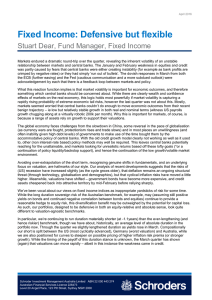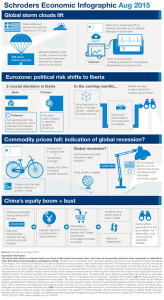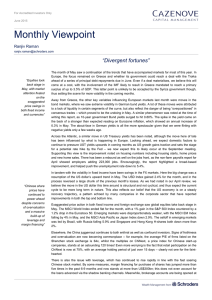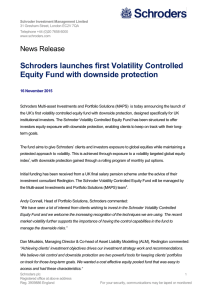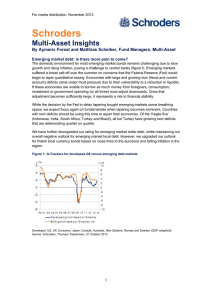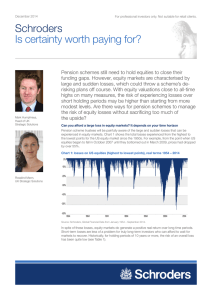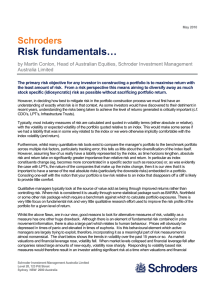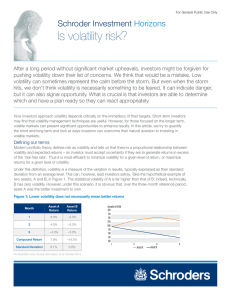When defence is best Real Matters Simon Stevenson, Head of Strategy
advertisement
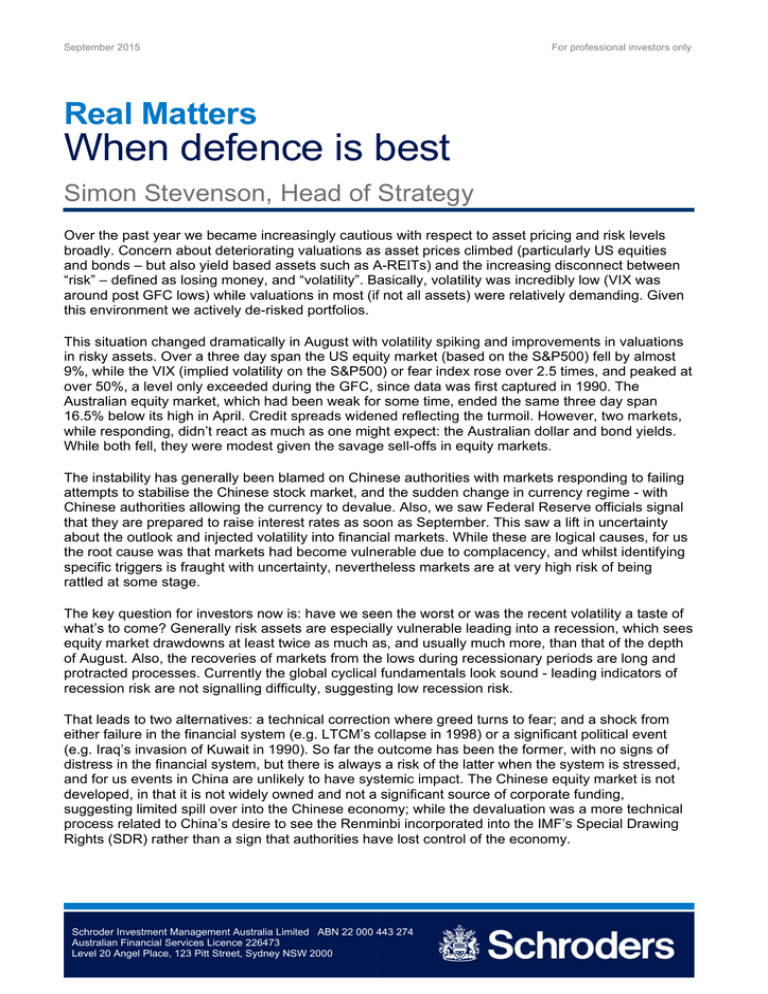
September 2015 For professional investors only Real Matters When defence is best Simon Stevenson, Head of Strategy Over the past year we became increasingly cautious with respect to asset pricing and risk levels broadly. Concern about deteriorating valuations as asset prices climbed (particularly US equities and bonds – but also yield based assets such as A-REITs) and the increasing disconnect between “risk” – defined as losing money, and “volatility”. Basically, volatility was incredibly low (VIX was around post GFC lows) while valuations in most (if not all assets) were relatively demanding. Given this environment we actively de-risked portfolios. This situation changed dramatically in August with volatility spiking and improvements in valuations in risky assets. Over a three day span the US equity market (based on the S&P500) fell by almost 9%, while the VIX (implied volatility on the S&P500) or fear index rose over 2.5 times, and peaked at over 50%, a level only exceeded during the GFC, since data was first captured in 1990. The Australian equity market, which had been weak for some time, ended the same three day span 16.5% below its high in April. Credit spreads widened reflecting the turmoil. However, two markets, while responding, didn’t react as much as one might expect: the Australian dollar and bond yields. While both fell, they were modest given the savage sell-offs in equity markets. The instability has generally been blamed on Chinese authorities with markets responding to failing attempts to stabilise the Chinese stock market, and the sudden change in currency regime - with Chinese authorities allowing the currency to devalue. Also, we saw Federal Reserve officials signal that they are prepared to raise interest rates as soon as September. This saw a lift in uncertainty about the outlook and injected volatility into financial markets. While these are logical causes, for us the root cause was that markets had become vulnerable due to complacency, and whilst identifying specific triggers is fraught with uncertainty, nevertheless markets are at very high risk of being rattled at some stage. The key question for investors now is: have we seen the worst or was the recent volatility a taste of what’s to come? Generally risk assets are especially vulnerable leading into a recession, which sees equity market drawdowns at least twice as much as, and usually much more, than that of the depth of August. Also, the recoveries of markets from the lows during recessionary periods are long and protracted processes. Currently the global cyclical fundamentals look sound - leading indicators of recession risk are not signalling difficulty, suggesting low recession risk. That leads to two alternatives: a technical correction where greed turns to fear; and a shock from either failure in the financial system (e.g. LTCM’s collapse in 1998) or a significant political event (e.g. Iraq’s invasion of Kuwait in 1990). So far the outcome has been the former, with no signs of distress in the financial system, but there is always a risk of the latter when the system is stressed, and for us events in China are unlikely to have systemic impact. The Chinese equity market is not developed, in that it is not widely owned and not a significant source of corporate funding, suggesting limited spill over into the Chinese economy; while the devaluation was a more technical process related to China’s desire to see the Renminbi incorporated into the IMF’s Special Drawing Rights (SDR) rather than a sign that authorities have lost control of the economy. Schroder Investment Management Australia Limited ABN 22 000 443 274 Australian Financial Services Licence 226473 Level 20 Angel Place, 123 Pitt Street, Sydney NSW 2000 For professional clients only. Not suitable for retail clients The key point is that both of these outcomes generally see short lived falls and restore some value into markets. Given this we have used the volatility to deploy our cash and take advantage of the cheaper assets provided by the market falls. Overall our defensive position allowed us to respond proactively to the recent volatility and actively purchase cheaper assets. We retain a guarded approach against complacency and don’t necessarily think we have seen the low in markets, given the nature of volatility to cluster, expecting it to continue to be a wild ride in the near term. However, value has opened up and we believe over time the recent purchases will provide a positive contribution. Important Information: For professional investors only. Not suitable for retail clients. Opinions, estimates and projections in this article constitute the current judgement of the author as of the date of this article. They do not necessarily reflect the opinions of Schroder Investment Management Australia Limited, ABN 22 000 443 274, AFS Licence 226473 ("Schroders") or any member of the Schroders Group and are subject to change without notice. In preparing this document, we have relied upon and assumed, without independent verification, the accuracy and completeness of all information available from public sources or which was otherwise reviewed by us. Schroders does not give any warranty as to the accuracy, reliability or completeness of information which is contained in this article. Except insofar as liability under any statute cannot be excluded, Schroders and its directors, employees, consultants or any company in the Schroders Group do not accept any liability (whether arising in contract, in tort or negligence or otherwise) for any error or omission in this article or for any resulting loss or damage (whether direct, indirect, consequential or otherwise) suffered by the recipient of this article or any other person. This document does not contain, and should not be relied on as containing any investment, accounting, legal or tax advice. Schroders may record and monitor telephone calls for security, training and compliance purposes. Schroder Investment Management Australia Limited 2
